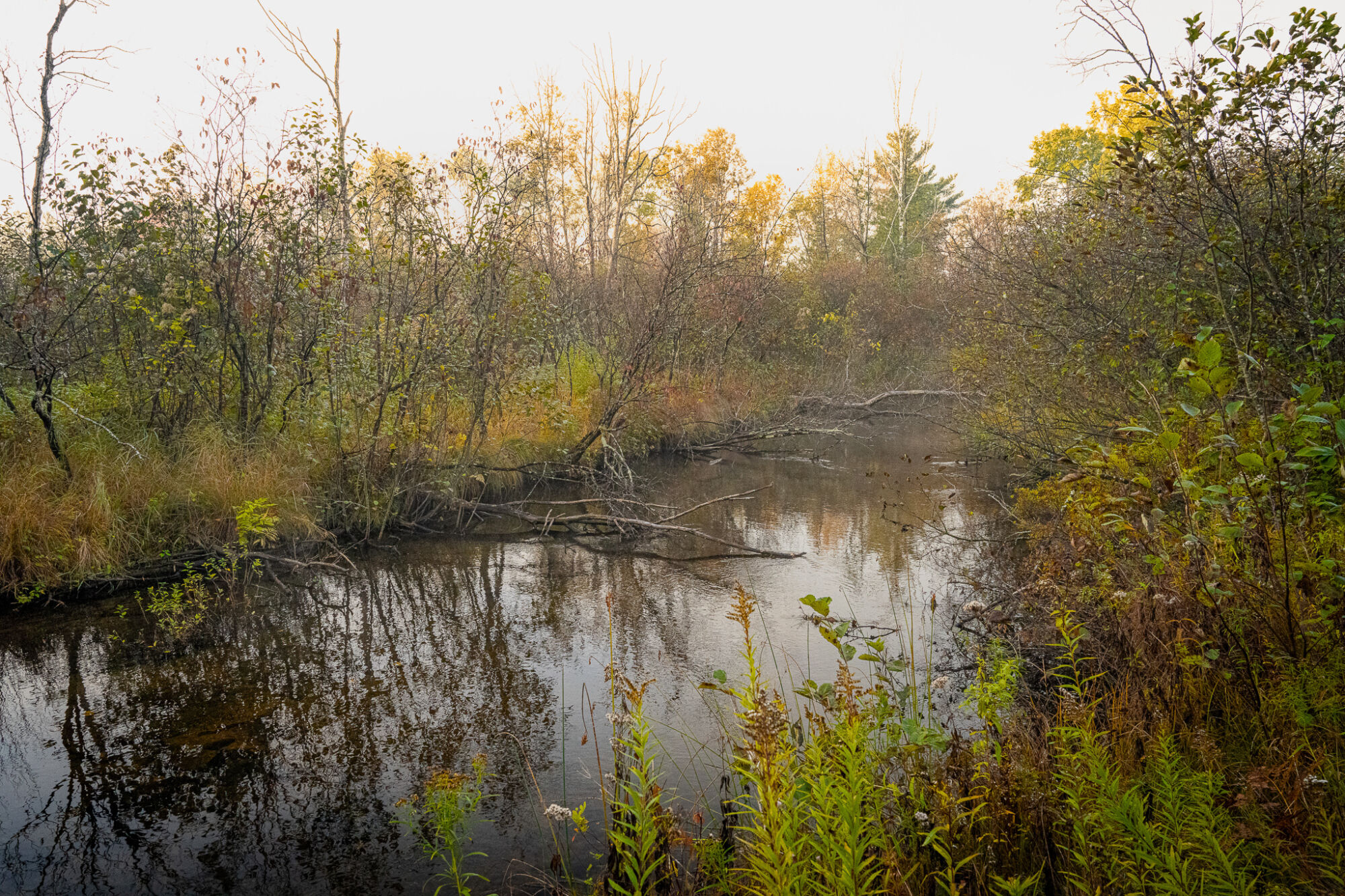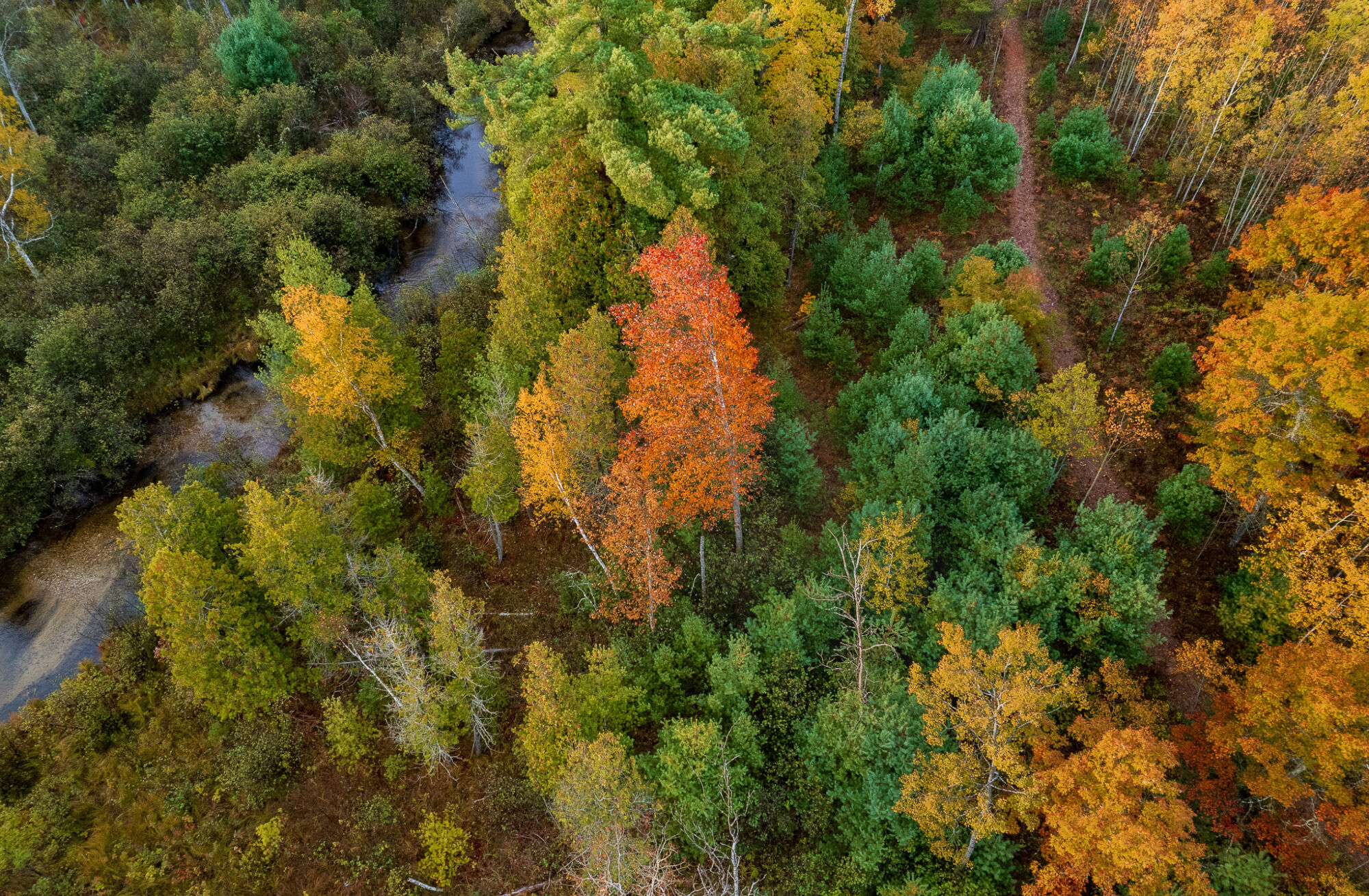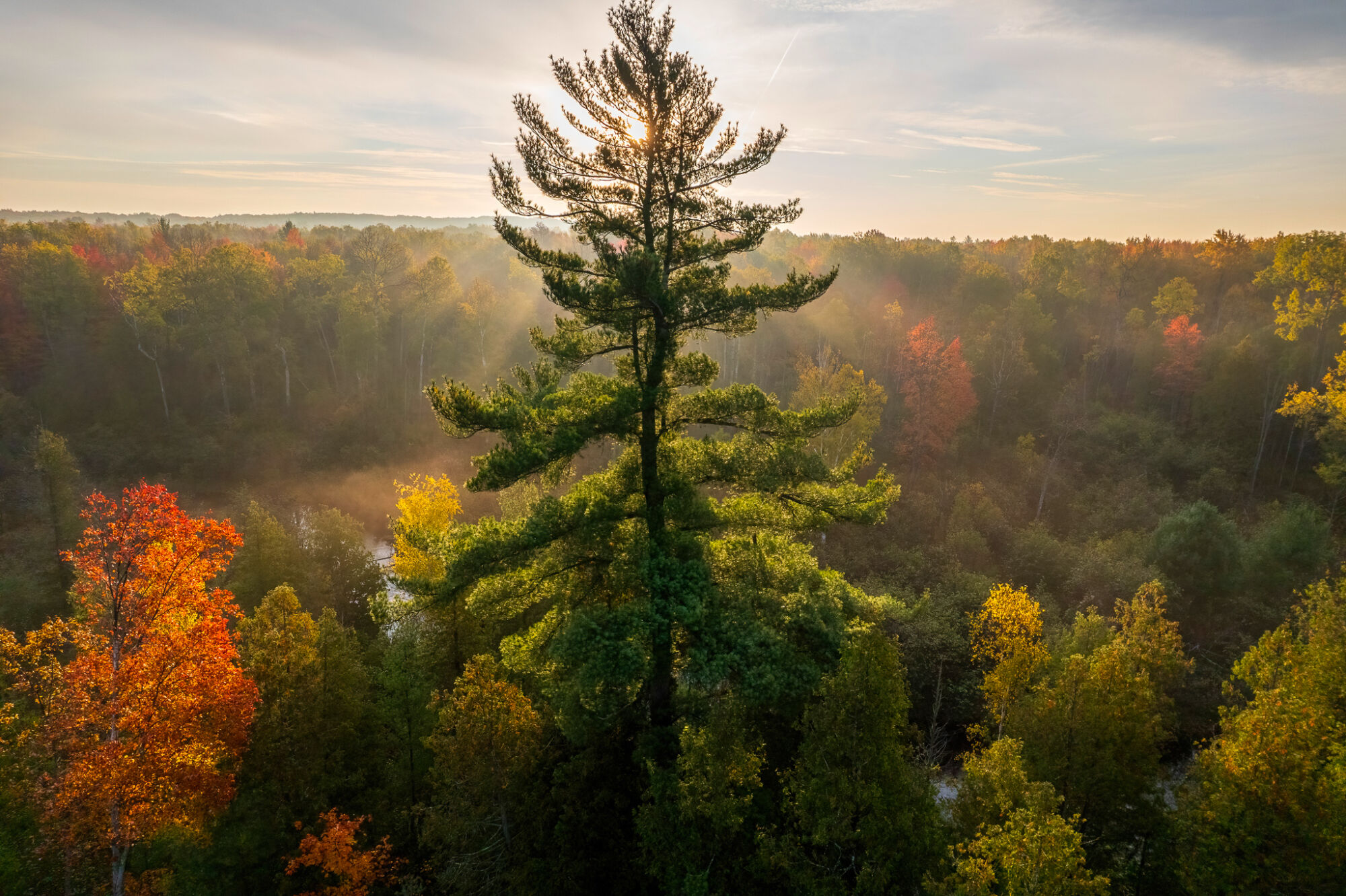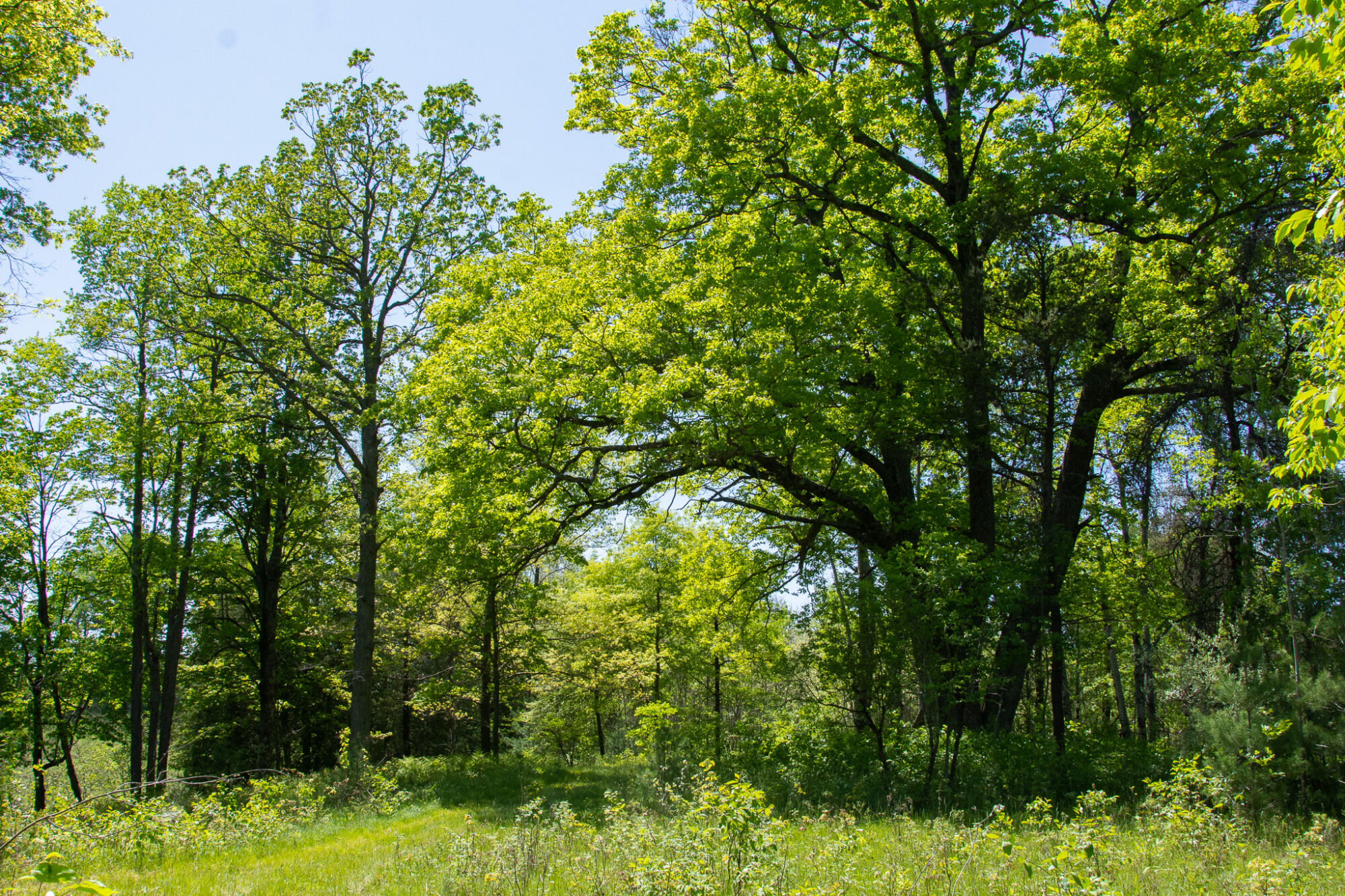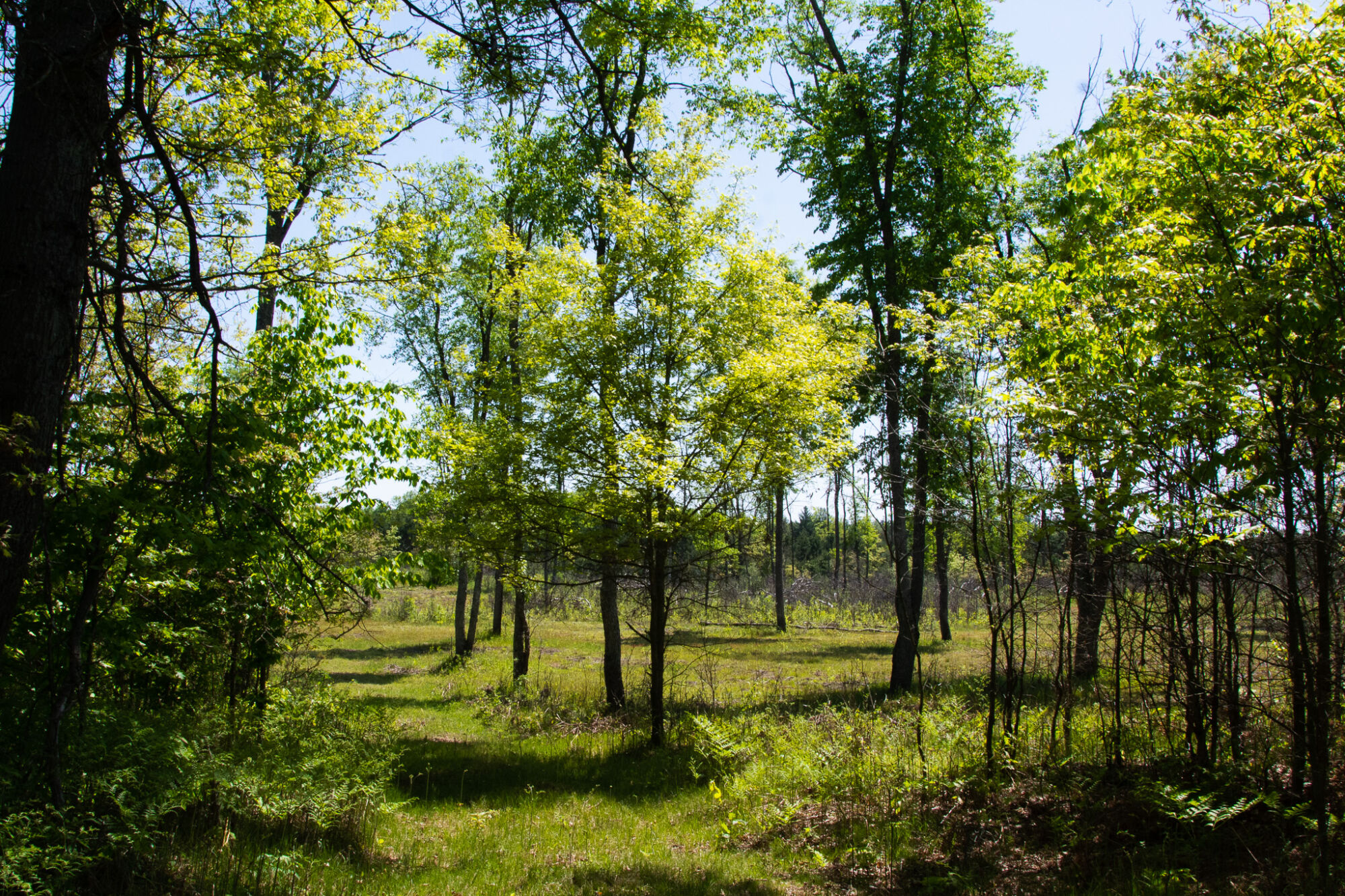Images by Steve Jessmore
McDuffee Creek Nature Preserve
View Map 11510 N Walnut Ave, Bitely, MI 49309
Features
-
 Fishing
Fishing
-
 Hiking
Hiking
-
 Hunting
Hunting
-
 Scenic Vista
Scenic Vista
-
 Sensitive Habitat
Sensitive Habitat
-
 Water Feature
Water Feature
-
 Wildlife Viewing
Wildlife Viewing
Amenities
-
 Leashed Pets Allowed
Leashed Pets Allowed
-
 Parking
Parking
At a Glance
- Approximate Street Address:
- West Entrance: 11510 N. Walnut Ave, Bitely, MI
- South Entrance: 2063 E 14 Mile Rd, Bitely, MI
- Every season promises visitors to McDuffee Creek Nature Preserve something new to discover, from the delicate ephemeral wildflowers and exuberant frog calls of spring to the thrilling salmon migration and technicolor fungi in fall.
- Trail Length: 1.8 miles (See Trail Map)
- Before you visit, check out our preserve guidelines. If you have any questions, feel free to contact us
Visitor Information
NOTICE: Part of McDuffee Creek Nature Preserve is open for archery-only deer hunting through the Michigan DNR’s Hunting Access Program. Rules and regulations apply. Hunting may occur in parts of the property that are south of the Little South Branch of the Pere Marquette River. The archery hunting seasons this year are October 1-November 14 and December 1-January 1. Please practice safety in the woods during these times.
A parking area is located at the West Entrance. Look for a sign marking the entrance. There is no parking area at the South Entrance; visitors entering there should park along the sides of E 14 Mile Road.
McDuffee Creek is a Category 1 LCWM Nature Preserve. Category 1 preserves have designated parking and well-marked trail systems. Most feature interpretive signs, overlooks, or other points of interest, and see fairly high levels of public use. Most trail systems feature an average grade of 2%. If you’re new to exploring nature, this is a great place to start.
Trail Information
- Natural surface/mowed grass
- 1.5 feet wide
- Average Grade: 1%
- Max Grade: 10%
- Average Cross Slope: <2%
There are currently two trail loops leading visitors through the west side of McDuffee Creek Nature Preserve. Access the trails at the West Entrance off of North Walnut Avenue.
The northern loop leads visitors through a beautiful, shady forest along the banks of the Little South Branch of the Pere Marquette River. The trail is mostly flat, natural surface, and is 1.5-feet wide.
The southern loop guides visitors through a more open area with occasional patches of shade. This trail explores the portion of the preserve that is being restored to rare oak savanna habitat. The trail is mostly flat, a mix of mowed grass and natural surface, and is 1.5-feet wide at its narrowest, with some wider sections.
Conservation Value
McDuffee Creek Nature Preserve protects a 3,500-feet stretch of the Little South Branch of the Pere Marquette River and over 3,200 feet of frontage on both sides of McDuffee Creek. Both the Little South Branch and McDuffee Creek are designated Natural Rivers within the state of Michigan. Both the Little South Branch and McDuffee Creek are known trout streams.
The property connects U.S. Forest Service land on its south and east borders, creating a natural greenway in this patchwork of protected forest. Wetland areas flank the waterways, with alder shrubs and sedge wetlands along the Little South Branch and a large area of wooded lowland near McDuffee Creek. The lowland forest has many vernal pools during the spring, which are filled with several species of breeding amphibians. The southwest portion of the property, formerly a pine plantation, is being actively restored to oak savanna habitat. Once common on the landscape, oak savannas are now exceedingly rare and can support a number of imperiled plant, insect, and wildlife species.
History
This landscape’s dominant feature is a glacial outwash plain. This formed when meltwater from retreating glaciers deposited layers of sand and fine gravel across the area, creating McDuffee Creek Nature Preserve’s flat topography. Subsequently, the Pere Marquette River (and to a lesser extent, McDuffee Creek) carved their way through the plain, leading to some steeper banks by the river.
Prior to European colonization, Native Americans lived in the Pere Marquette Watershed for over 10,000 years. Through activities like village clearings, fuelwood cutting, agricultural clearing, hunting, food harvesting, and fire, Native Americans shaped the ecology of the landscapes they inhabited.
According to General Land Office surveys completed around 1800, McDuffee Creek Nature Preserve once consisted of a mix of cedar swamp, shrub swamp/emergent marsh, beech-sugar maple-hemlock forest, pine barrens, and jack pine-red pine forest habitat types. A similar-but-altered mix of lowland and upland habitat types exists today. The property has been timber-harvested to varying degrees in the last 150 years.
In 1957, Charles W. Smith donated the 300-acre property to the Muskegon Kiwanis Club. A cabin and various other improvements were constructed on the property and used by a variety of West Michigan youth organizations. In 1995, the property was transferred to the Community Foundation for Muskegon County (CFMC). The Kiwanis Club continued to manage the property and facilitate its charitable purposes. Kiwanis Club members hunted the land and planted food plots. In 2016, the CFMC worked with the Land Conservancy to protect 275 acres of the property with a conservation easement. In 2023, the CFMC sold the entire 300 acres to the Land Conservancy. Under the Land Conservancy’s ownership, the landscape is permanently protected and open for public exploration and gentle recreation.
McDuffee Creek Nature Preserve is made possible with support from the Carls Foundation, the Community Foundation for Muskegon County, Ducks Unlimited, the Fremont Area Community Foundation, the U.S. Fish and Wildlife Service, and several generous donors.




